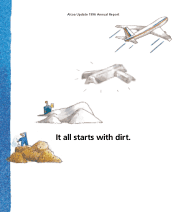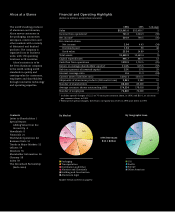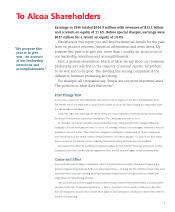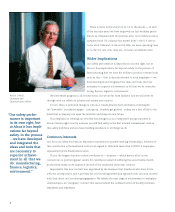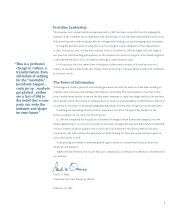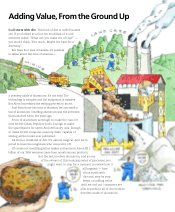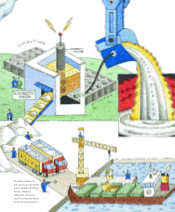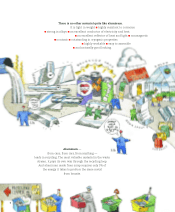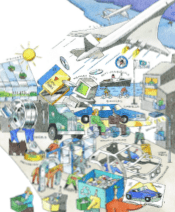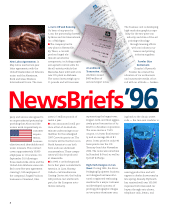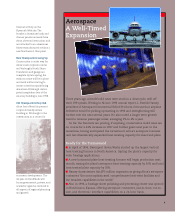Alcoa 1996 Annual Report Download - page 3
Download and view the complete annual report
Please find page 3 of the 1996 Alcoa annual report below. You can navigate through the pages in the report by either clicking on the pages listed below, or by using the keyword search tool below to find specific information within the annual report.
1
To Alcoa Shareholders
Earnings in 1996 totaled $514.9 million with revenues of $13.1 billion
and a return on equity of 11.6%. Before special charges, earnings were
$637 million for a return on equity of 14.4%.
Elsewhere in this report you will find the financial details for the year,
facts on product volumes, historical information and news items. My
purpose this year is to give you, more than I usually do, an account of
our leadership intentions and accomplishments.
First, a general observation. Much of what we say about our business
philosophy you will find in the majority of annual reports. All profess
to do well and to do good. The dividing line among companies is the
difference between professing and doing.
For example, all companies say, “People are our most important asset.”
The question is, what does that mean?
First Things First
In our case, respect for the individuals who work in Alcoa begins at the most fundamental level.
We believe that if an employee is injured and unable to work, the idea of being an “important asset”
is a meaningless sentiment.
From this logic, ten years ago we made safety our most important internal priority, announcing
the intent to achieve an injury-free workplace. The challenge was how to do it.
At the time, we had an enviable safety performance as compared with the average American
company. Our lost workday rate was 1⁄3of the U.S. average. Many of our managers believed it was not
possible to do a lot better. They cited our “dangerous workplace,” dominated by heavy equipment
and electricity and hot metal. Others simply believed, “Accidents happen.” So one of our first needs
was to convince the leaders of the company that better safety performance was possible.
We started this effort by sending our opinion leaders to visit DuPont factories and those of other
companies that had a better safety experience than we did, and we began to ask ourselves why.
Cause and Effect
A second need was to begin a systematic effort to produce better results. This meant beginning a
process of generating learning from our injury experience — looking for the common causes that were
associated with injuries, creating better performance expectations for supervisors and individual
employees, and eliminating excuses.
One such excuse is the misapplied idea from economic theory that perfect safety is unaffordable
because of the law of diminishing returns — that is, it would cost too much to deliver on the idea
that all employees should return home each night in the same good condition as when they came to
work in the morning.
“My purpose this
year is to give
you…an account
of our leadership
intentions and
accomplishments.”

